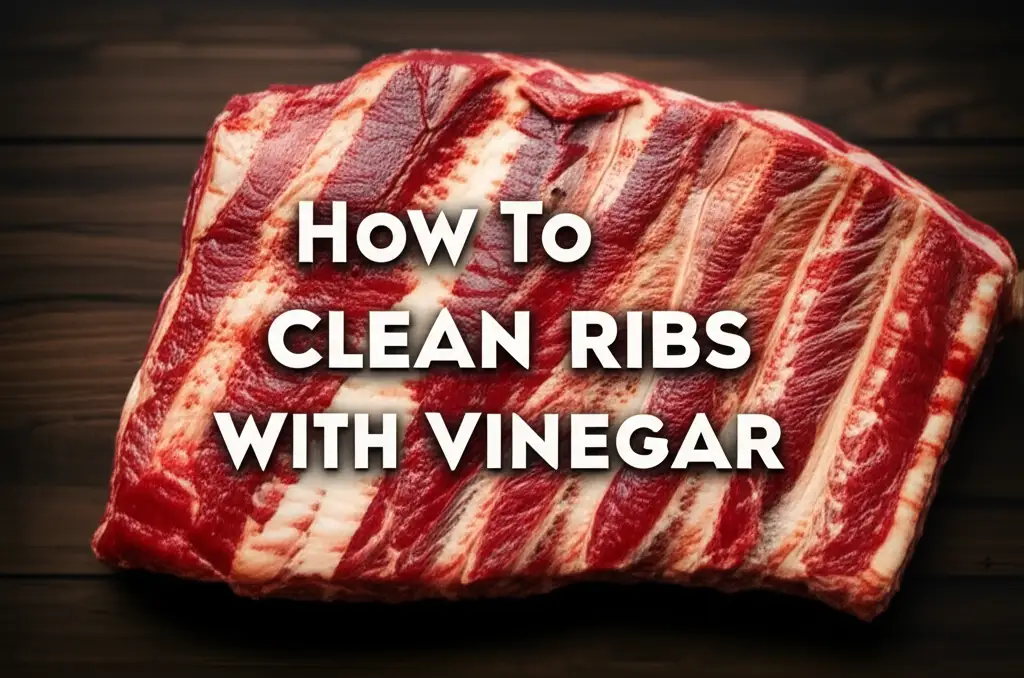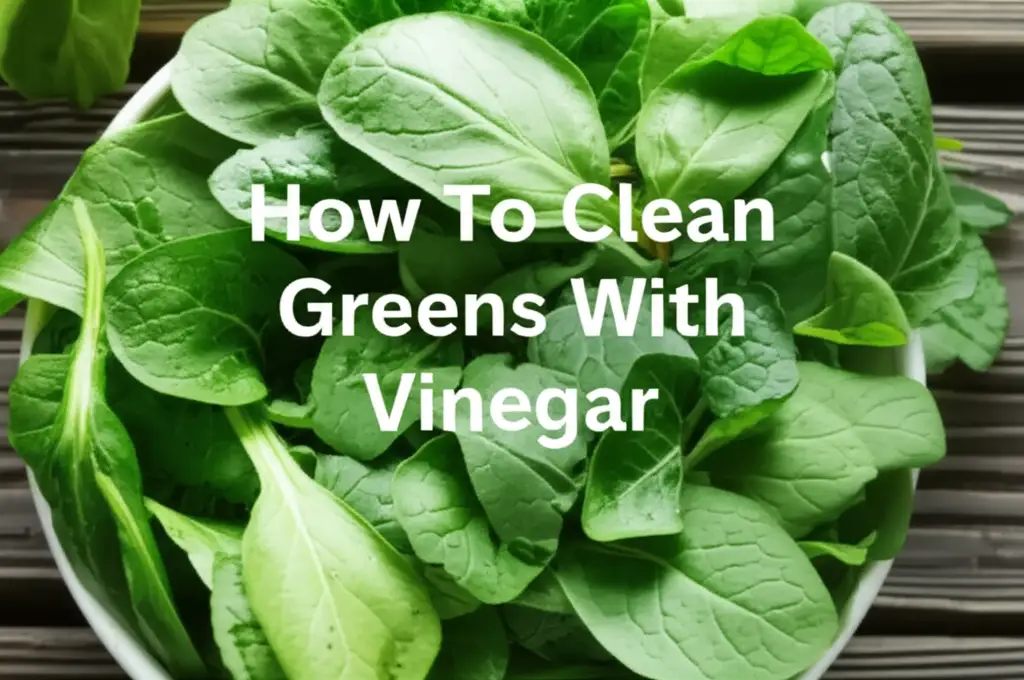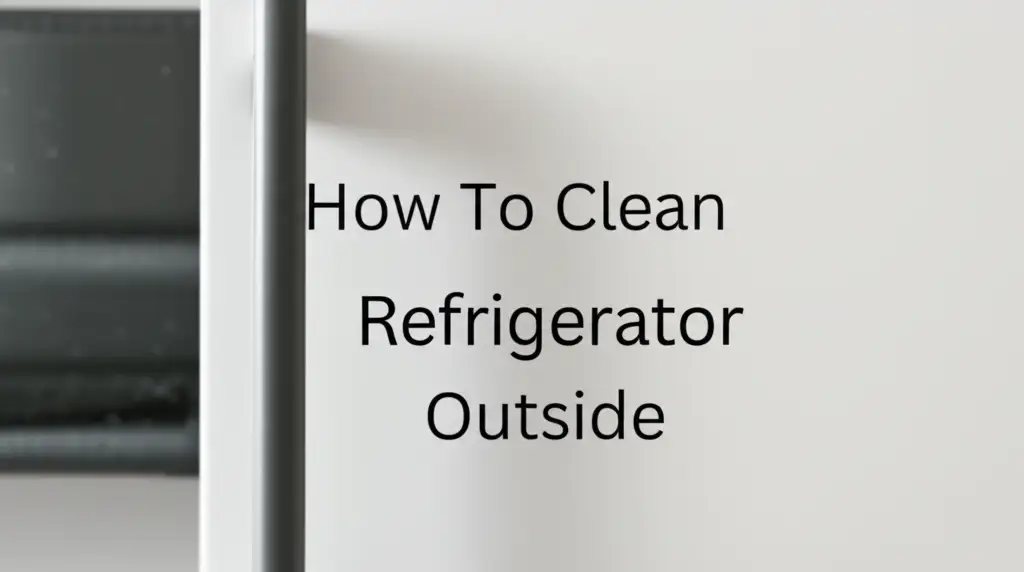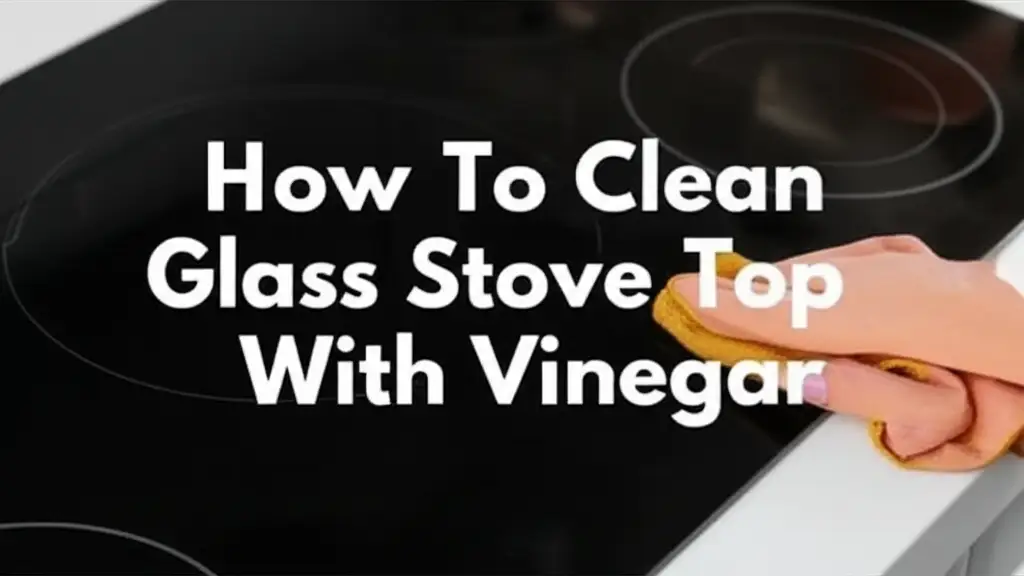· Kitchen Cleaning · 14 min read
How To Clean Stainless Steel Appliances With Vinegar
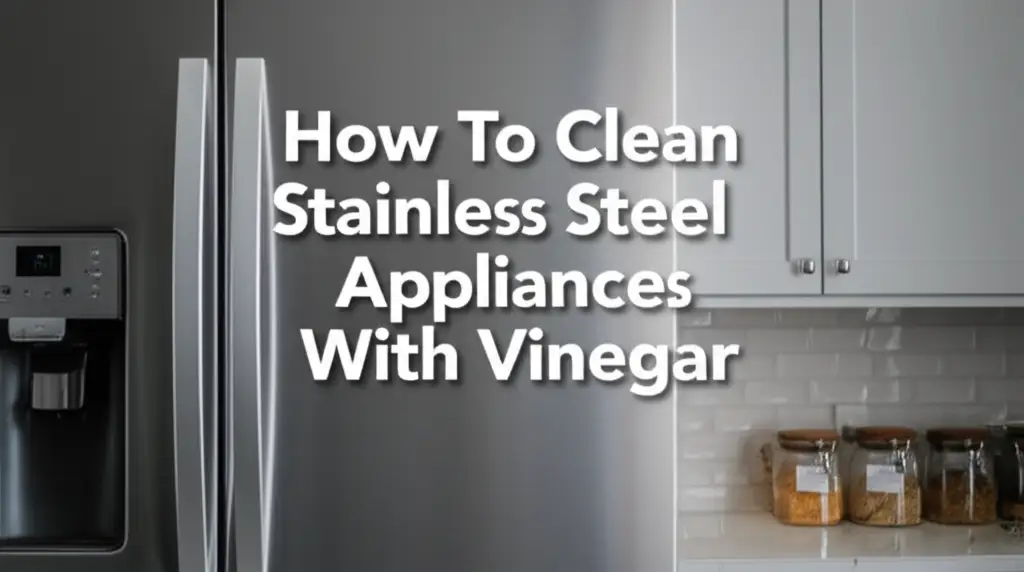
Clean Stainless Steel Appliances with Vinegar for a Sparkling Shine
Have you ever wondered how to bring back the shine to your stainless steel appliances? These fixtures add elegance to any kitchen. However, fingerprints, smudges, and food splatters can quickly dull their appearance. You might think you need harsh chemicals for a proper clean.
But what if I told you a simple, natural ingredient could do the job? Vinegar is a powerhouse cleaner. It cuts through grime and leaves surfaces gleaming. This article explains how to clean stainless steel appliances with vinegar. We will cover everything from preparation to polishing. You will learn simple methods to maintain your kitchen’s beauty.
Takeaway
- Use distilled white vinegar for effective, natural cleaning.
- Always clean in the direction of the grain to avoid scratches.
- Follow up with a micro fiber cloth for a streak-free shine.
- Regular cleaning prevents buildup and keeps appliances looking new.
Cleaning stainless steel appliances with vinegar effectively removes fingerprints, smudges, and minor stains. Its acidic nature cuts through grease and grime, leaving a streak-free, polished finish when paired with proper wiping techniques. This method offers a safe, natural, and budget-friendly cleaning solution.
1. Understanding Stainless Steel and Vinegar’s Cleaning Power
Stainless steel looks great in modern kitchens. It resists rust and corrosion. This metal contains chromium. Chromium forms an invisible, protective layer on the surface. This layer helps the steel resist damage. But it does not prevent fingerprints or smudges.
Vinegar is a weak acid. It is usually acetic acid mixed with water. This acidity allows vinegar to dissolve grease. It also breaks down mineral deposits. This makes it an excellent cleaner for various surfaces, including stainless steel. Vinegar also disinfects naturally. This adds another benefit to its cleaning power.
Many commercial cleaners contain harsh chemicals. These chemicals can harm your skin. They can also leave strong odors. Vinegar offers a natural alternative. It cleans effectively without the risks. You will find it gentle on your appliances and safe for your home. Using vinegar is an eco-friendly choice for cleaning.
Always use distilled white vinegar for cleaning. Other types, like apple cider vinegar, can leave residue or stains. Distilled white vinegar is clear and pure. It delivers the best cleaning results for stainless steel surfaces.
2. Gathering Your Cleaning Essentials
Before you start cleaning, gather your supplies. You likely have most of these items already. This makes vinegar cleaning simple and accessible. You need just a few basic tools for success.
Here is what you will need:
- Distilled White Vinegar: This is your primary cleaning agent. It is inexpensive and widely available. Make sure it is distilled white vinegar for the best results.
- Spray Bottle: A spray bottle allows for easy application. You can mist the vinegar evenly over the surface. This helps avoid oversaturation.
- Two Microfiber Cloths: Microfiber cloths are essential. They absorb well and leave no lint. Use one for cleaning and one for drying and polishing. Avoid abrasive sponges or paper towels. They can scratch stainless steel or leave fibers behind.
- Water: You will need water for diluting the vinegar. You also need it for rinsing the surface after cleaning.
- Optional - Olive Oil or Mineral Oil: A small amount of oil can help polish the surface. It also helps resist future smudges. This step is for extra shine.
Having everything ready saves time. It also makes the cleaning process smooth. Prepare your space for efficient cleaning. Protect surrounding surfaces if you plan to spray a lot.
3. Step-by-Step Guide to Cleaning Stainless Steel Appliances with Vinegar
Cleaning your stainless steel appliances with vinegar is easy. Follow these steps for a brilliant finish. Remember, the key is to clean with the grain of the steel. This prevents streaks and scratches.
Here is the simple process:
- Step 1: Prepare the Surface Wipe down the appliance with a damp cloth. This removes loose dirt and food particles. This initial wipe prevents scratching during deeper cleaning. You can use plain water for this step.
- Step 2: Determine the Grain Direction Look closely at your stainless steel. You will see faint lines. These lines indicate the grain. Stainless steel has a grain, just like wood. It might run horizontally or vertically. Always wipe in this direction. Wiping against the grain can create tiny scratches. It also pushes dirt into the microscopic grooves.
- Step 3: Mix Your Cleaning Solution Pour equal parts distilled white vinegar and water into a spray bottle. For example, use one cup of vinegar and one cup of water. This dilution makes the vinegar gentler on surfaces. It is still powerful enough to clean effectively. Shake the bottle gently to mix.
- Step 4: Spray the Surface Lightly mist the stainless steel appliance with your vinegar solution. Do not oversaturate the surface. A fine mist is enough to cover the area. For stubborn spots, you might spray a little more directly.
- Step 5: Wipe with the Grain Immediately wipe the sprayed surface with a clean microfiber cloth. Wipe in the direction of the grain. Apply gentle pressure. You will see smudges and fingerprints disappear. The vinegar dissolves the grime efficiently. Continue wiping until the surface looks clean.
- Step 6: Rinse with Water Dampen a second clean microfiber cloth with plain water. Wipe the appliance again, still following the grain. This step removes any remaining vinegar residue. Rinsing prevents streaks. It ensures a truly clean surface.
- Step 7: Dry and Buff Use a dry, clean microfiber cloth to thoroughly dry the surface. Buff the stainless steel. This final step enhances the shine. It also helps prevent water spots. Continue buffing until the appliance looks completely dry and polished. For tips on managing tough water spots, see our guide on how to clean hard water stains from stainless steel sink.
Following these steps ensures your stainless steel appliances look their best. This method is simple, effective, and uses common household items.
4. Tackling Stubborn Stains and Fingerprints
Even with regular cleaning, stainless steel can develop stubborn marks. Fingerprints are common offenders. Grease splatters near the stove or sink can also be tough. Vinegar alone might not always fully remove these. However, with a few extra steps, vinegar remains a key player.
For persistent smudges or fingerprints, repeat the vinegar and water spray. Spray a bit more directly onto the mark. Let it sit for a minute or two. The vinegar needs time to break down the oils. Then, wipe firmly with the grain using a microfiber cloth. This often lifts the stubborn residue.
Sometimes, you encounter dried food or grease. These marks need extra attention. Create a paste with baking soda and a small amount of water. Apply this paste directly to the stain. Gently rub it with your finger or a soft cloth. Do not scrub hard. Baking soda is a mild abrasive. It helps lift tough spots without scratching. For a broader understanding of how these two natural cleaners work together, check out our article on how to clean with vinegar and baking soda.
After applying the baking soda paste, rinse it off with a damp cloth. Then, proceed with the regular vinegar cleaning steps. This ensures a thorough clean. It also restores the stainless steel’s shine. Remember to always wipe with the grain. This detail prevents new marks and protects the finish.
For specific tough stains on stainless steel, like burnt oil, specialized approaches may be needed. Our guide on how to clean burnt oil from stainless steel pan provides detailed steps for such challenging issues. Similarly, for everyday kitchen spills, learn how to clean tea stains from stainless steel with ease.
5. Achieving a Streak-Free Shine
The goal of cleaning stainless steel is a streak-free, polished look. Vinegar cleans effectively. But the drying and buffing steps are crucial for achieving this. Streaks often appear when residue remains or drying is incomplete. This section focuses on perfecting that final gleam.
After cleaning with your vinegar solution and rinsing with plain water, immediate drying is vital. Water left on stainless steel can evaporate and leave behind mineral deposits. These deposits appear as unsightly streaks or spots. Use a separate, dry, clean microfiber cloth for this step. Ensure it is completely dry and lint-free.
Begin buffing the surface immediately after rinsing. Wipe firmly in the direction of the grain. Move your hand in long, overlapping strokes. This technique ensures you cover the entire surface evenly. Buffing removes any residual moisture. It also helps to polish the metal. You will notice the stainless steel starting to gleam.
For an extra layer of protection and shine, consider a small amount of olive oil or mineral oil. Pour a few drops onto a fresh, dry microfiber cloth. A little goes a long way. Gently wipe the oil onto the stainless steel, again following the grain. This creates a thin barrier. This barrier repels fingerprints and minor smudges. It also enhances the natural luster of the metal. Buff with another clean part of the cloth until the oil is evenly distributed and no greasy residue remains. This step is optional but highly recommended for a truly professional finish.
The final buffing session makes all the difference. It transforms a clean surface into a sparkling one. Take your time with this step. The result is a shining appliance that looks new.
6. Maintaining Your Stainless Steel’s Luster
Cleaning stainless steel is only part of the equation. Consistent maintenance keeps your appliances looking pristine. Regular, quick cleanings prevent major buildup. This means less work for you in the long run. Good habits extend the life and beauty of your stainless steel.
Make a habit of daily or weekly wipe-downs. For light cleaning, simply use a damp microfiber cloth. Wipe down the surfaces after cooking or daily use. This removes fresh fingerprints and splatters. This small effort prevents them from drying and becoming stubborn stains. Always follow the grain during these quick wipes.
Consider keeping a small spray bottle of diluted vinegar solution handy. A 1:1 mixture of vinegar and water is perfect. You can quickly mist and wipe any new smudges. This proactive approach keeps your stainless steel consistently clean. It reduces the need for deep cleaning sessions.
Encourage household members to avoid touching stainless steel directly. Use handles and knobs whenever possible. This minimizes fingerprint accumulation. Little changes in habits can make a big difference. This simple step protects the surfaces from constant smudging.
Periodically, you might want to give your appliances a more thorough cleaning. Follow the full steps outlined previously. This includes the vinegar wash, rinse, and buffing. This deeper clean addresses any accumulated grime. It also helps restore the protective oil layer if you use it. Regular care means your stainless steel appliances always look their best.
For other kitchen appliances that benefit from vinegar, consider how to clean a glass stove top. Our guide on how to clean glass stove top with vinegar offers helpful tips. Also, learn how to keep your dishwasher sparkling with natural ingredients by reading how to clean dishwasher with vinegar and baking soda.
7. Common Mistakes to Avoid When Cleaning Stainless Steel
While cleaning stainless steel with vinegar is straightforward, certain mistakes can diminish results or even damage surfaces. Avoiding these common pitfalls ensures your appliances stay beautiful and well-maintained. Knowing what not to do is as important as knowing what to do.
- Using Abrasive Cleaners or Tools: Never use steel wool, abrasive sponges, or scouring powders on stainless steel. These materials can scratch the surface permanently. Scratches dull the finish and make the steel more susceptible to rust. Always opt for soft microfiber cloths.
- Wiping Against the Grain: This is a very common mistake. Wiping against the grain can create tiny scratches. It can also trap dirt in the microscopic grooves of the metal. Always observe the grain direction and wipe accordingly for best results.
- Using Harsh Chemicals: Avoid bleach, ammonia-based cleaners, oven cleaners, or strong degreasers. These harsh chemicals can discolor stainless steel. They can also damage the protective layer. Vinegar is a gentle yet effective alternative.
- Leaving Water to Air Dry: Letting water air dry on stainless steel often leads to water spots and streaks. Minerals in tap water leave residue when they evaporate. Always dry and buff the surface thoroughly with a clean, dry cloth immediately after cleaning.
- Applying Too Much Oil: If you choose to use olive oil or mineral oil for polishing, use it sparingly. Too much oil can leave a greasy residue. This residue can attract dust and smudges more quickly. Apply a few drops to a cloth, not directly to the appliance.
By avoiding these mistakes, you can protect your stainless steel appliances. You will maintain their pristine appearance for many years. Proper care prolongs their life and keeps your kitchen looking clean.
8. Beyond Appliances: Other Vinegar Cleaning Uses for Your Kitchen
Vinegar is a versatile cleaner, not just for stainless steel appliances. Once you see how effectively it works, you might wonder about other uses. Your kitchen offers many opportunities for vinegar to shine. It is a true multi-purpose solution for a cleaner home.
Consider your stainless steel pots and pans. They often accumulate stains from cooking. Vinegar can help remove these marks. A mixture of vinegar and water can clean the inside and outside of your pots. For tougher stains, you might combine it with baking soda. Learn more about how to clean stainless steel pans with baking soda for excellent results.
Vinegar also excels at cleaning glass surfaces, like your oven door or cabinet inserts. A quick spray of diluted vinegar and a wipe with a microfiber cloth leaves glass sparkling. It cuts through grease and fingerprints without leaving streaks. This makes it ideal for many kitchen surfaces.
Even your kitchen sink, especially if it’s stainless steel, benefits from vinegar. Hard water stains can build up around faucets. Vinegar dissolves these mineral deposits easily. A simple scrub with vinegar brings back the shine. This also applies to chrome fixtures.
Using vinegar for various cleaning tasks reduces your reliance on multiple specialized cleaners. This saves you money and space. It also means fewer harsh chemicals in your home. Embrace the power of vinegar for a cleaner, healthier kitchen. It is an affordable and effective solution for many cleaning challenges.
Frequently Asked Questions
Is it safe to use vinegar on all types of stainless steel? Yes, distilled white vinegar is generally safe for most stainless steel appliances. Always use a diluted solution (50/50 with water) and avoid prolonged contact. Wipe and dry the surface promptly. Test a small, inconspicuous area first if you have concerns. This ensures no adverse reactions occur.
Can vinegar remove rust spots from stainless steel? Vinegar can sometimes help with minor surface rust, especially if it’s fresh. Its acidity can dissolve light rust. For severe rust, vinegar may not be strong enough. You might need specialized rust removers designed for stainless steel. Always rinse thoroughly after application.
How often should I clean my stainless steel appliances with vinegar? For light cleaning and fingerprint removal, a weekly wipe-down is sufficient. For deeper cleaning or to address stubborn smudges, monthly or bi-monthly cleaning is ideal. Adjust frequency based on appliance usage. Regular cleaning prevents significant buildup.
Will vinegar leave a smell on my appliances? The strong smell of vinegar dissipates quickly as it dries. Ensure proper ventilation during cleaning. The smell should be completely gone once the appliance is dry. A final buff with a clean, dry cloth helps remove any lingering scent.
Can I use apple cider vinegar instead of white vinegar? No, it is best to use distilled white vinegar. Apple cider vinegar contains sugars and other impurities. These can leave a sticky residue or even stain your stainless steel. Distilled white vinegar is pure and clear. It provides the best, streak-free results.
What if my stainless steel still looks streaky after cleaning with vinegar? Streaks usually mean residue or insufficient drying. Ensure you are wiping with the grain of the steel. Use a clean, dry microfiber cloth for the final buffing. You may need to re-wipe and buff if streaks persist. A very light application of olive oil can also help.
Conclusion
Cleaning your stainless steel appliances with vinegar is a simple, effective, and environmentally friendly approach. You can achieve professional-looking results without harsh chemicals. We have covered everything from preparing your cleaning solution to tackling stubborn stains. You now know the importance of wiping with the grain. You also understand the crucial step of proper drying and buffing.
Vinegar is a powerhouse cleaner for stainless steel. It cuts through grease, removes fingerprints, and leaves a beautiful shine. Incorporating regular vinegar cleaning into your routine will keep your appliances looking new. This method saves you money. It also provides a healthier cleaning alternative for your home. Embrace the simplicity and power of vinegar. Start cleaning your stainless steel appliances today for a sparkling, streak-free kitchen.
- vinegar cleaning
- stainless steel care
- natural cleaner

